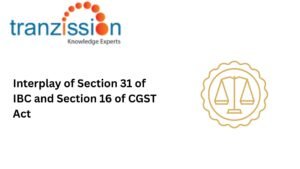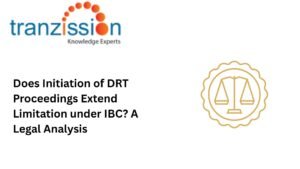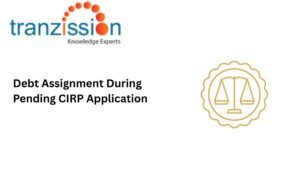
What is rebidding in the resolution process?
Table of Contents
Stressed assets refer to loans or debts where the borrower is struggling to repay, potentially leading to non-performing assets (NPAs) and posing risks to the financial system. Rebidding in the resolution process bid for such assets to acquire businesses at discounted valuations or restructure operations for revival.
Role of Bidding in CIRP:
In the corporate insolvency resolution process (CIRP), bidding plays a crucial role by allowing resolution applicants to propose plans to revive the distressed company as a going concern, with the “best plan” that offers the most financial benefit. Therefore, it is integral in CIRP to ensure asset value maximization for creditors, fair competition among interested buyers, and revival of distressed businesses when a suitable resolution plan is approved.
Legal Framework Governing Bidding Process Under IBC
The IBC and the Insolvency and Bankruptcy Board of India (Insolvency Rebidding in the resolution process for Corporate Persons) Regulations, 2016 (“the CIRP Regulations”) govern the bidding process:
The key provisions under the IBC on the bidding process are sections 25(2)(h), section 29A, and 30. Section 25(2)(h) mandates the resolution professional (RP) to invite resolution applicants, who meet the criteria approved by the Committee of Ceditors (CoC), to submit resolution plans, considering the complexity and scale of the corporate debtor’s business. Section 29A restricts who can submit resolution plans by disqualifying certain individuals or entities from participating in the bidding process for stressed assets, ensuring only eligible and responsible entities can revive companies. Section 30 outlines the requirements for a resolution applicant to submit a plan, including an affidavit stating eligibility under section 29A and the process for the CoC to approve the plan.
Regulation 36A under the CIRP Regulations outlines the process for inviting expressions of interest (EOIs) from prospective resolution applicants, including an evaluation matrix, at least 30 days before the last date for submitting resolution plans. Further, Regulation 36B explains the process for issuing a Request for Resolution Plan (RFRP) to prospective resolution applicants in the insolvency Rebidding in the resolution process, ensuring transparency and encouraging competition. Regulation 39(1A) provides a standardized evaluation matrix and process documents for bidding.
Read more :Role of ESG in Corporate Governance
Step-by-Step Bidding Process for Stressed Assets
As per section 25(2)(h) of the IBC and Regulation 36A and Regulation 36B of the CIRP Regulations, the RP issues an invitation in newspapers and the IBBI portal, and Interested bidders submit EOIs along with eligibility documents.
The shortlisted applicants receive access to an information memorandum (IM), containing the company’s financials, liabilities, and asset valuation.
The resolution applicants submit detailed bids, including a proposed payment structure on the operational revival strategy, including the employee retention and creditor repayment plan.
As per section 30, the CoC evaluates bids based on asset recovery value, viability, and feasibility of the Rebidding in the resolution process, ensuring the timely execution of its potential.
In cases of close bids, RPs may conduct multiple bidding rounds to allow competing applicants to improve offers. Taking, for instance, the Swiss Challenge method, the highest bid becomes the benchmark, and other applicants are invited to better the offer.
Once the CoC approves the best bid by a 66% majority vote under Section 30(4) of IBC, the National Company Law Tribunal (NCLT) must grant final approval, as per Section 31.
Key Challenges in the Bidding Process for Stressed Assets
The legal and procedural challenges in the bidding process are:
Legal Hurdles – Section 29A Ineligibility:
Section 29A is a restrictive provision that can have significant implications for corporate restructuring and Rebidding in the resolution process. RPs often take a long time to identify the resolution applicants, which leads to legal disputes and delays.
Lack of Transparency in Bid Evaluation:
There have been concerns over the CoCs’ decisions, particularly on its opaque evaluation process and allegations of favoring certain bidders.
Value Erosion Due to Delays:
The procedural issues and prolonged legal battles in addition to the NCLT delays, often result in deterioration of asset value during CIRP. This adversely affects the restructuring of the corporate debtor and may end in its liquidation.
Information Gaps:
The IM is an important document in the bidding process thereby, if it contains any incomplete or inaccurate information, there are limitations to bidders’ ability to assess asset value effectively.
Judicial Trends on Bidding Process Under IBC
The Supreme Court in ArcelorMittal India v. Satish Kumar Gupta upheld the strict application of Section 29A, emphasizing due diligence before bidding. The court interpreted section 29A of the IBC, clarifying the ineligibility of certain resolution applicants, particularly those with ties to promoters of companies in insolvency. The court in K. Sashidhar v. Indian Overseas Bank held that courts cannot interfere with CoC’s commercial wisdom unless there is fraud or procedural irregularity, as long as the requirements of section 30(2) of the IBC are met.
Best Practices for Resolution Applicants During Bidding
The RP should conduct detailed due diligence throughout the resolution process, such as reviewing the IM and seeking independent financial assessments wherever they find it necessary.
RPs should ensure compliance with IBC norms and Section 29A eligibility requirements.
The RP and the CoC need to develop a competitive bid strategy, focusing on long-term viability rather than just the upfront payment.
The resolution applicants, RPs, and the CoC should be able to anticipate last-minute competing offers and factor flexibility into their proposal.
Conclusion: Rebidding in the resolution process
The bidding process involves interested parties submitting resolution plans to the RP to acquire a distressed company, which are then evaluated and voted upon by the CoC. The IBC aims to ensure a transparent and fair bidding process, also including the best possible recovery for creditors through the sale of the company or its assets in a time bound manner. Due to the criteria listed under section 29A of the IBC, which essentially ensures that CIRP remains transparent, it can also delay the process. Hence, it is recommended for the RP to adopt strategic bidding practices for a successful resolution process.





